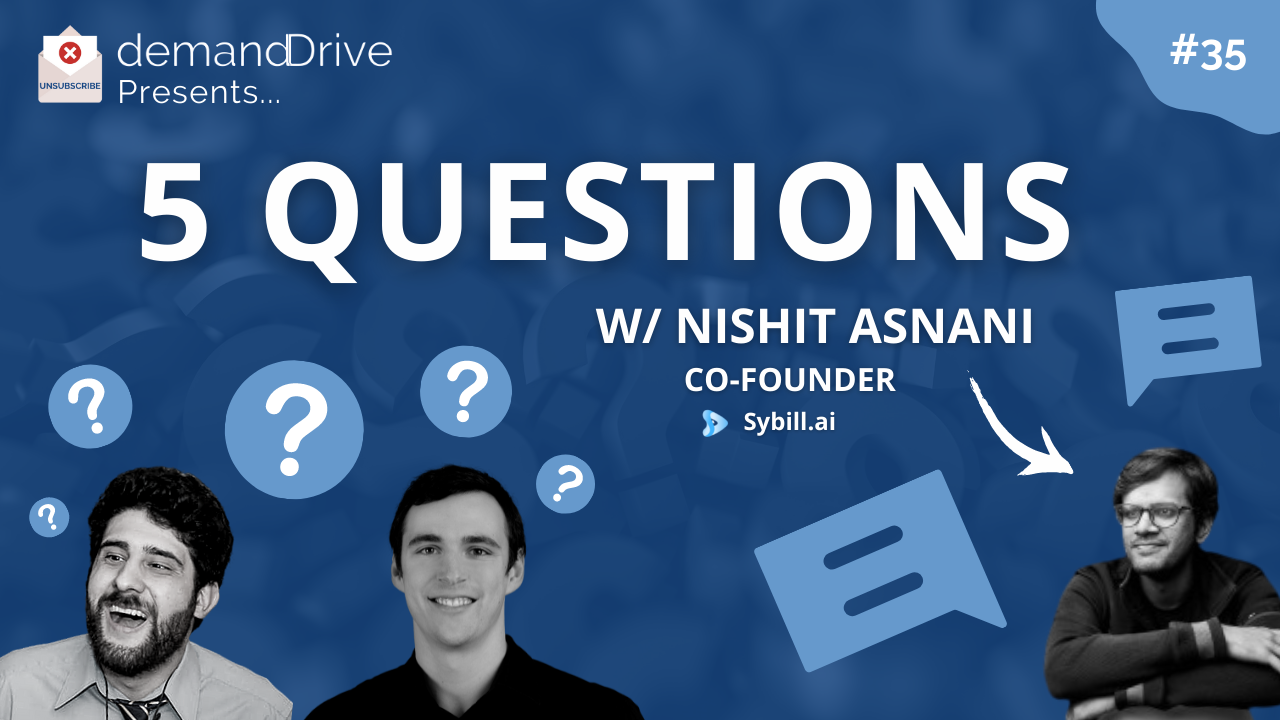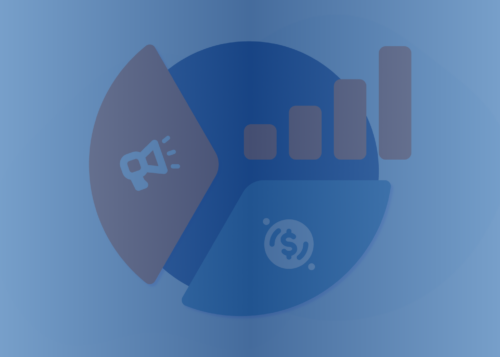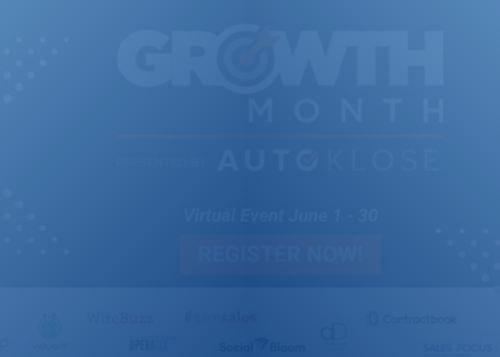Managing Your Pipeline

⚡ SDR Symposium | February, 2022
Our first ever SDR Symposium focused on the importance of managing and communicating with your pipeline.
We decided on the topic for 2 reasons:
1) It was the start of the new year, and that presents a great opportunity for SDRs to get back in touch with prospects they’d built a relationship with.
2) The biggest impact an SDR can have on the business (from an outbound perspective) is pushing prospects from their personal pipeline (as we call it, the ISQL) into the company’s pipeline (aka, a sales opportunity).
We think it’s one of the biggest differentiators between a good SDR and a great one.
Whether you leverage sales intelligence tools, productivity/time management hacks, or compelling nurture campaigns, having a handle on your personal pipeline is crucial to SDR success.
And that’s why we ran it back this month.
Consider this Symposium a V2 of our first event.
Our panel covers topics like who goes into their pipeline, how they keep track of those contacts, and the tactics they use to flip those personal pipeline into sales opportunities.
The Panel

Anthony Licciardello
Sr. SDR, Team Lead

Mike Mahoney
Sr. SDR, Team Lead

Lee Baker
Team Lead & Training Coordinator

Andrew Smith
Team Lead & Sales Training Coordinator
️ Building Early and Often
Our panel began the discussion by stressing the importance of building pipeline in your first few months on the job.
What you do early in your career as an SDR will impact your success down the line. Jeb Blount calls it the “30-Day Rule” in his book, Fanatical Prospecting.
“The 30-Day Rule states that the prospecting you do in this 30-day period will pay off for the next 90 days.”
It’s not perfect, but the idea behind it holds water. Your activities now dictate the level of success you’ll have in ~3 months.
Knowing that, our panel had some advice:
Lee suggests doubling your activity goals, no matter the number. The more activities you make, the more conversations you have (in theory). And each conversation gives you:
-
A chance to learn something new
-
A prospect to follow-up with in a few months
Sales is a timing game. Spend the first bit of your career learning as much as you possibly can, and then get back in touch with those prospects once you have a better handle on the role.
No doesn’t mean “no forever.” Andrew likes to say that if “someone has a pulse, they’re in my pipeline.” Everyone should have a follow-up plan, from the CMO you talked with yesterday who said they have an active budget to the manager that said “not interested” on your second day of calling.
Prospects change their mind. Company goals shift. Industry trends force adaptation.
Unless someone explicitly tells you to never contact them again, you should have a system in place to keep track of all your conversations & follow-ups (more on that later).
And more on the “how do I keep in touch with these people without seeming like a pest?” question later as well.
Mike brought up the fact that as an SDR, you’re the connection between your company and your prospects. And if you want to win the business of your prospects one day, you have to keep that connection open.
He agreed, “no doesn’t mean no forever.” Doing what you can early on to find out why a prospect responded with “no” will not only make future conversations with them easier, but you learn more about your…
-
ICP
-
Value Propositions
-
Message Sentiment
-
Competitors
to make those future conversations more meaningful.
Speaking of those early conversations, Anthony advised any newer rep to look back at your old conversation notes.
You probably didn’t know it at the time, but you were gathering a lot of solid intel in those early calls. And with a little more experience under your belt, you can get back in touch with those prospects and have a more sophisticated conversation.
But of course, that depends on the quality of your notes…
The Importance of Detailed Notes
Building pipeline is borderline worthless if you don’t pair up those conversations with good notes. Otherwise, how would you know what to reference on a follow-up call?
More importantly, as Anthony pointed out, you can’t expect a prospect to remember talking with you. They’re inundated with outreach from SDRs just like you, and chances are you blend right into the masses.
But you can mitigate that by taking detailed notes.
If you can capture the most important parts of your previous conversation and resurface those in a follow-up, the chances that a prospect remembers you and that original conversation are much higher. The more detailed, the better.
Andrew suggests going as far as jotting down the tone of the prospect in your notes. It humanizes your follow-up and brings you up or down to the level of the prospect.
The last thing you want is to start a call with a super bubbly attitude while your prospect is at a 0/10 on the energy scale. Matching and mirroring your prospect is one thing, but knowing what to expect going into the call is another.
We cover how to Match & Mirror your prospect in our Cold Calling Symposium.
Andrew is also of the mindset that there’s no such thing as notes that are too detailed. As he so eloquently put it, “this isn’t a puppet show, you’re taking notes for a reason.” Jot down anything and everything that you think will make a follow-up conversation easier.
Mike uses his notes to create a simple tiering system for his follow-up. That way he can batch his activities based on priority, depth of conversation, and effort level.
It can be as simple as Tier 1 – Tier 2 – Tier 3. But it’s not possible unless you take detailed enough notes to differentiate your follow-up into separate buckets. A conversation with someone looking to pull the trigger is very different from someone you’re pinging as a way to keep in touch.
⏺️ If you’re concerned that your note-taking skills aren’t up to par, Lee’s solution is to leverage call recording technology. Listening back to your conversations means you can take notes at your own pace and really pinpoint areas of the conversation worth remembering.
There are bound to be nuggets of information you missed during a live conversation. Listening back ensures that you capture anything and everything for a follow-up.
Speaking of call recording technology, check out a couple of podcast episodes we recorded related to that topic


Where Do You Keep Your Notes?
SDRs have a lot of options available to them when it comes to tracking their pipeline.
You have your standard options like a CRM or good old fashioned pen and paper, but we’ve seen reps use a Google/Excel spreadsheet, their calendar, and other reminder systems.
Anthony recommends transferring any important follow-ups directly to your calendar system of choice. Writing down a follow-up date and tossing it into your CRM is a good basic step to take, but as soon as you move that task into your calendar there’s very little opportunity for it to slip through the cracks.
You should be tracking these pipeline accounts & follow-up in multiple places – names and details are hard to forget when you’ve put them in 3 locations. Anthony finds that taking your hand-written notes and transferring them to your CRM, and then from your CRM to your calendar is the best system for him.
Both Lee and Andrew have built out a Google Sheet to keep track of their pipeline. They have different systems for how to read & action the data (it doesn’t have to be pretty, it just has to work), and it’s worked wonders for their follow-ups.
Keeping a living document allows them to access a snapshot of their pipeline at any given moment without having to pull a report in their CRM. It’s easy enough to navigate to that tab, give the sheet a quick once-over, and plan out how you’ll incorporate any follow-ups in your daily activities.
Plus, Andrew brought up a good point: “Having the sheet open 24/7 makes me WANT to fill it up. That, and seeing prospect’s names everyday reminds me of them and the conversation we had.” The sheet isn’t just good for tracking and planning, it helps you psychologically as well.
⚠️ Mike leverages his CRM more heavily than the rest, and uses it to help prioritize his outreach for the day. He does this by setting a priority level for each follow-up task.
A lot of CRMs allow you to standardize the priority (normal, urgent, low), but you can also customize the title of your tasks to help categorize your follow-ups. That way you can block out chunks of time for dedicated pipeline follow-up and still have enough time to get other tasks done.
➕ Other Tips & Tricks
-
Leverage the “free notes” field on your CRM (if you don’t have one, get your CRM admin to add one). This is a great spot to put in crucially important information about your prospect. That way, it’s right there on the contact page to remind you of your past conversation before reaching out.
-
A good thing to keep here is the channel you used to connect with this prospect. That way you know where they’re (most likely) going to respond.
-
-
Think about adding a source like Google Alerts (or other research tools) to your pipeline rotation. Keeping track of prospects and accounts on your own is one thing, but when you have other services tracking them for news, industry trends, mentions, etc. it can really improve your follow-up.
⌛ How Often is Too Often?
Nobody likes a pushy salesperson – especially if you tell that salesperson “no” or “now isn’t a good time.”
But if you don’t reach out to a prospect every now and then, they’ll forget about you. So what’s an SDR to do?
Anthony believes that if you’re prospect is being honest with you (big if), then there’s no need to harass them. But you do need to hold them to the timeframe they’ve given you.
If someone asks you to reach out 6 months from now, giving them a pulse check at month 2 and 4 is a good way to remind them that you still exist. That way when you hit the 6 month mark, you haven’t been radio silent the whole time.
Mike agreed with Anthony, and suggests that SDRs keep in touch with their prospects via social media (LinkedIn being the primary option). It’s much easier to stay in touch with someone via social interaction than calling or emailing them.
You can also leverage LinkedIn to invite your prospects to events, share articles, and stay on top of their activity. If anything, it will make that follow-up conversation easier and more helpful than if you didn’t connect with them.
Not sure where to start with social selling? Give this “Social Selling for SDRs” class a watch!
Lee likes to use the content his marketing team produces to his advantage. He can share relevant articles, events, posts, etc. with his pipeline accounts as they get published. That way he’s not coming across as annoying, but as a resource for his prospects.
He also likes to drop the timeframe given to him by a month or two. If someone asks him to reach out in October, he’ll send them a message in early September. More often than not sales cycles are longer than expected. Lee finds that the earlier he can introduce a prospect to his AE, the better. That way when the original timeframe rolls around, the prospect is already in the sales pipeline and having meaningful conversations.
And if you’re still worried about being annoying when reaching out, Andrew recommends that you embrace it. He will flat out tell his prospects, “sorry for being annoying…” when reaching out.
Transparency is a valuable skill to master here. If you can be honest with your prospect and get to the root of your follow-up – provide resources, double-check timeframes, share new information – more often than not they respect that. As long as you actually care about helping your prospects (and you don’t stink of commission breath), they’ll react positively.
⛔ Does Anyone Not Belong?
After reading the sections above you might be thinking to yourself, “who isn’t considered a pipeline?” We’re glad you asked!
There are few instances where our panel agreed that someone shouldn’t be assigned a follow-up task.
Andrew likes to say, “if they have a pulse, they’re in my pipeline.” But that’s not the case for anyone who tells him to piss off (or use similar, more colorful language).
Every prospect you talk with has the potential of becoming a customer (theoretically, it depends on your targeting). Knowing that, it becomes a matter of timing. And if you want to get your timing right, you need to stay in touch with every viable prospect you speak with.
Plenty of SDRs have passed leads with a prospect who originally told them no. But they won’t fall into your lap – you have to put in the work to stay top of mind. Your goal is to carve out space in your prospect’s brain for your name and brand, not go silent after chatting with them and hoping they remember you.
Mike leaves out unhelpful prospects, or someone who doesn’t work with the solution his company sells. If a prospect can’t provide you with any helpful information – who they currently use, who you can speak with, broad goals or challenges – it’s not worth your time staying in touch.
️ Lee echoed Mike’s point, and added that account mapping is your friend. The more people you can add to your cadence, the better. Put on your detective hat and ask for referrals within the organization from the people who aren’t directly responsible for what your company does. It sounds crass, but once they help you out and continuing a conversation doesn’t offer either party value, it doesn’t make sense to keep them in your pipeline.
Anthony simply said: “if they suck, don’t bother.” As an SDR you will face a LOT of rejection, it’s just part of the job. No need to add more frustration and negative energy by wasting your time with someone who’s flat out not a nice person.
Other Tips
Here’s a collection of other advice & best practices that our panel mentioned during the conversation:
-
Note-taking is crucial in all aspects of sales – even when the situation is no longer in your hands. Lee recommends listening to and taking notes on the handover calls that your AE runs with the prospects you pass them. There are plenty of learning opportunities for you on those calls RE: objection handling, new value props, competitor intel, etc.
Plus, there’s a chance that you might have to get back in touch with that prospect down the line (timing is off and your AE asks you to re-engage, for example). Best to have those notes written down so you can pick the conversation back up vs. starting from scratch.
-
If someone asks you to follow-up with them (and it’s not a brush-off objection), you should hold them accountable to that. Mike was blunt about it: “these people are just like us – they put their pants on one leg at a time.” Newer SDRs are often intimidated by the title of the prospects they’re prospecting. You have to shake that feeling, especially when you’re holding them to an agreed upon timeframe.
-
Our whole panel agreed that without pipeline management, none of them would be as successful as they are now. Andrew’s point really resonated – the best SDRs are systematic, not just talented.
-
Ever get an email reply that simply says “not interested” (or some variation of that)? This is a great opportunity to pick up the phone and get some context. Chances are the prospect is at their desk/by their phone (they just emailed you), so you have a higher chance of catching them live. And when you do get them on the phone, you can dig into the why of their response and set yourself up for a better conversation in the future.
-
If you’re talking follow-up timeframes, it’s best if you can get a tentative date & time on the calendar. And when you do, make sure to flesh out the invite with conversation notes & next steps. That way both you and the prospect have a reminder on your calendar + any important notes you include in the description.
We said it before and we’ll say it again – pipeline management is one of the most crucial skills to build as an SDR. It’s one of the only ways you can add a form of consistency to the role – and for new reps it serves as a great safety net for those down months.
The more you exercise the skill the more that safety net evolves into a dependable source of leads on a monthly basis. Pipeline now become leads in the future – it happens every day. You just need to manage them effectively.
—
Want to continue the conversation with someone from our team? Drop us a note!
Related Resources
Continue exploring

A Guide to Research-Based Prospecting in 2024

Drive Revenue by Expanding Interdepartmental Cohesion

Unlock Revenue Growth with a Unified Approach to Sales and Marketing

A New Era for demandDrive

5 Ways To Leverage Video In Sales That Could Immediately Grow Revenue

9 MUST ATTEND Growth Month Sessions

